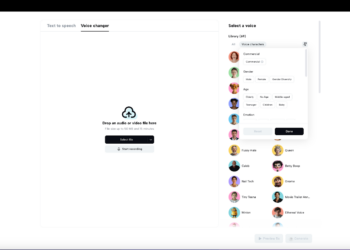In the current digital era, a paperless office isn’t merely a trendy concept—it’s essential for business. This approach offers a clutter-free workspace where every document is just a click away, and it substantially contributes to environmental conservation by reducing paper use.
If anchored in traditional paper-based methods, transitioning can seem daunting. But with careful planning, dedication, and the right strategies, your journey toward digital transformation can be smooth. Below is a thorough guide to help you make the switch.
Understand The Importance
Why should you create a paperless office? Understanding the myriad benefits of this change is crucial. For one, actions like accessing and sharing files and collaborating become seamless in a digital environment. This transition not only cuts costs and improves efficiency but also promotes environmental conservation.
Additionally, a digital system provides enhanced security, addressing the growing concerns regarding data protection. Digital files, unlike physical ones, can be encrypted, securely stored, and shielded from unauthorized access. This shift isn’t merely about staying current but optimizing operations and safeguarding essential assets.
Establish A Document Management Protocol
Having digital files is a start, but effective management is paramount. That said, set protocols for naming, categorizing, and storing files. By maintaining a consistent naming system, implementing a clear organizational structure, and setting up stringent access controls, businesses can prevent any confusion and optimize document management.
Involve your team during this phase. Every member should understand and adhere to these protocols, ensuring a consistent system. Implement regular check-ins as well to clear up uncertainties and keep everyone aligned.
Also, consider the life cycle of your documents. Some may need updates, while others might be set for archiving or deletion after a while. Addressing this ensures your digital repository stays up-to-date.
Promote Digital Collaboration
Changing the way your team collaborates can significantly boost productivity. Modern collaboration tools often come with integrated communication features, leading to fewer emails, faster feedback, and more streamlined discussions.
That said, direct them toward platforms like Google Docs or Microsoft Teams, which allow real-time collaboration, eliminating the need for paper. For meetings or presentations, opt for digital displays instead of printed handouts. This not only conserves paper but also encourages dynamic interaction.
Invest In The Right Tools
For this transformative journey, you need top-notch tech gadgets and tools. Start with high-end scanners to digitize your existing documents, and consider cloud solutions for easy storage and retrieval. It’s also recommended to invest in a strong document management system. These systems streamline your files and offer features like version control and access permissions, vital for a truly paperless office.

Although an initial expenditure is required, the long-term operational and financial benefits are clear.
Foster A Supportive Environment
Creating a paperless office goes beyond tools—it’s about cultivating a supportive environment. Some team members might find the shift challenging, mainly if they’re accustomed to paper-centric methods. That said, it’s essential to foster an environment where queries are encouraged, training is accessible, and the advantages of a paperless approach are consistently highlighted.
Moreover, acknowledging individual efforts and achievements can spur motivation. When team members feel valued and appreciated, they engage more with the new system, ensuring a lasting change.
Plan For Long-Term Sustainability
Transitioning to a paperless office is a commendable step towards sustainability. However, it’s important to recognize that the journey towards being sustainable does not end once you’ve shifted to digital solutions. Continuous monitoring of the sustainability of your paperless strategies is essential to ensure that your efforts align with environmental preservation goals.
For instance, while digital systems have the potential to reduce paper waste, they also have other environmental impacts, such as increased energy consumption. To address these impacts, consider exploring green tech solutions and opting for energy-efficient devices.
By incorporating these practices into your paperless approach, you can further minimize your ecological footprint and contribute to a greener future.
Deal With Incoming Paper
External paper documents will still arrive even as you embrace a digital domain. Prepare for them by designating areas for scanning and promptly digitizing these documents. Moreover, for any printed document that does arrive, maintain a consistent recycling method, ensuring eco-friendliness.

It’s also a good strategy to endorse a digital-first approach with partners and vendors. Over time, this approach reduces incoming paper and promotes a broader digital culture.
Celebrate Milestones And Educate
Take a moment to celebrate every achievement, regardless of its scale. Recognitions, like reduced paper use or the successful implementation of a new tool, can lift team spirit. Additionally, regularly share the benefits of a paperless office. Dedication often increases when your team understands the broader impact of their efforts.
Consider joining sustainability or digital transformation networks as well. By actively engaging in these groups, you can gain fresh perspectives, stay updated on industry best practices, and position yourself at the forefront of the paperless trend.
Conclusion
Switching to a paperless office is more than just eliminating paper—it’s a leap toward preparing for the future. With the right mindset, tools, and advice, this transition can enhance efficiency and cost savings and significantly contribute to environmental care. Step into the digital age, refine your processes, and guide your business toward a brighter, more sustainable tomorrow.














































































































